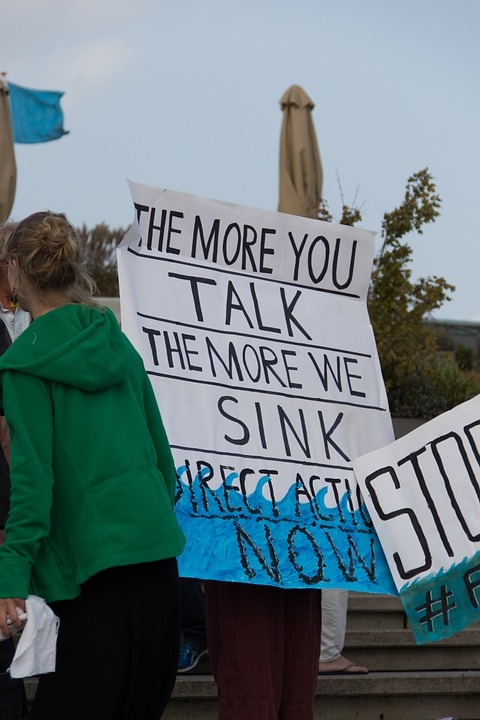Why Oceans are Part of the Climate Solution
This blog was written by Carolyn Caywood.
Even if you live a thousand miles from the nearest coast, oceans — which make up nearly seventy percent of our blue planet — affect your life. As human carbon emissions warm our atmosphere, the ocean absorbs both CO2 and heat, buffering us from the worst effects of our excess. But giving us that protection has changed the oceans we depend on.
Our seas are warming at an accelerating rate, driving stronger storms and raising sea levels through thermal expansion. Melting land ice also increases the sea level rise, and warmer water and melting ice together are disrupting the ocean currents that redistribute heat, salinity, and nutrients around the planet.
Warmer water is pushing marine species away from equatorial water where many people depend on their catch from the sea.
Seas are becoming more acidic as dissolved CO2 becomes carbonic acid and eats away coral and shells built of calcium carbonate.
All these shifts have a financial impact as well as the obvious environmental ones. Rising seas impact insurance and mortgage businesses and investors as they see their assets literally go underwater. Congress is currently struggling to restructure the National Flood Insurance Program to help keep homeowners from destitution.

Further, oceans are like highways connecting the world in a web of trade. Our economy is so interconnected that a shipping accident in the Suez Canal can cause ripples around the globe. On top of that, shipping is a major source of emissions, making our problems worse.
Oceans Are Part of the Climate Solution
We are in a climate crisis of our own making. We know we need to remove carbon dioxide from the atmosphere, and we need sustainable energy sources that don’t emit greenhouse gasses. Ironically, despite all the damage that climate change has wrought on our oceans, those oceans can also help us respond to the climate crisis.
To start, we can sequester carbon in coastal marsh, seagrass, and mangrove, without making the water more acidic. In the process called “diurnal vertical migration,” or DVM, microscopic animals carry carbon into the ocean’s depths, where it is sequestered, and nutrients move up to the oxygen-emitting phytoplankton in the sunlit surface water. Work is only beginning on the relationship between DVM and climate change and how human activities may affect this important process.
Then there’s offshore wind, and other forms of sustainable energy dependent on the oceans. Researchers are testing ways to capture energy from wave action, the twice-daily rise and fall of the tide, and even the temperature difference between surface and depths.
As we use the ocean to help our crisis, we must adapt to changing waterways. In places like the Netherlands, people have learned ways to redesign human activities to accommodate the sea. We need to expand marine protected areas to have healthy, sustainable fisheries. If we collaborate with the ocean, we will have a better chance of saving an environment beneficial to life.
The League of Women Voters has been at the forefront of strong environmental action since the 1960s. On climate change, the League states, “As citizens of the world, we must protect our planet from the physical, economic, and public health effects of climate change while also providing pathways to economic prosperity.” Our oceans must be a part of that.
The Latest from the League
The League signed onto a letter to select legislators urging them to support the National Climate Adaptation and Resilience Strategy Act (NCARS; S. 3531).
The SEC requested public comments on a proposed amendment to the Securities Act of 1933 and Securities Exchange Act 1934 . The League supports the proposed amendment.
Carbon emissions are causing widespread and potentially irreversible damage to the environment — and also have a significant impact on the economy.
While some people rationalize our failure to decrease emissions by keeping that the actions needed to do so would hurt the economy, the costs of doing nothing are even higher and are increasing with every day of inaction.
Sign Up For Email
Keep up with the League. Receive emails to your inbox!
Donate to support our work
to empower voters and defend democracy.





